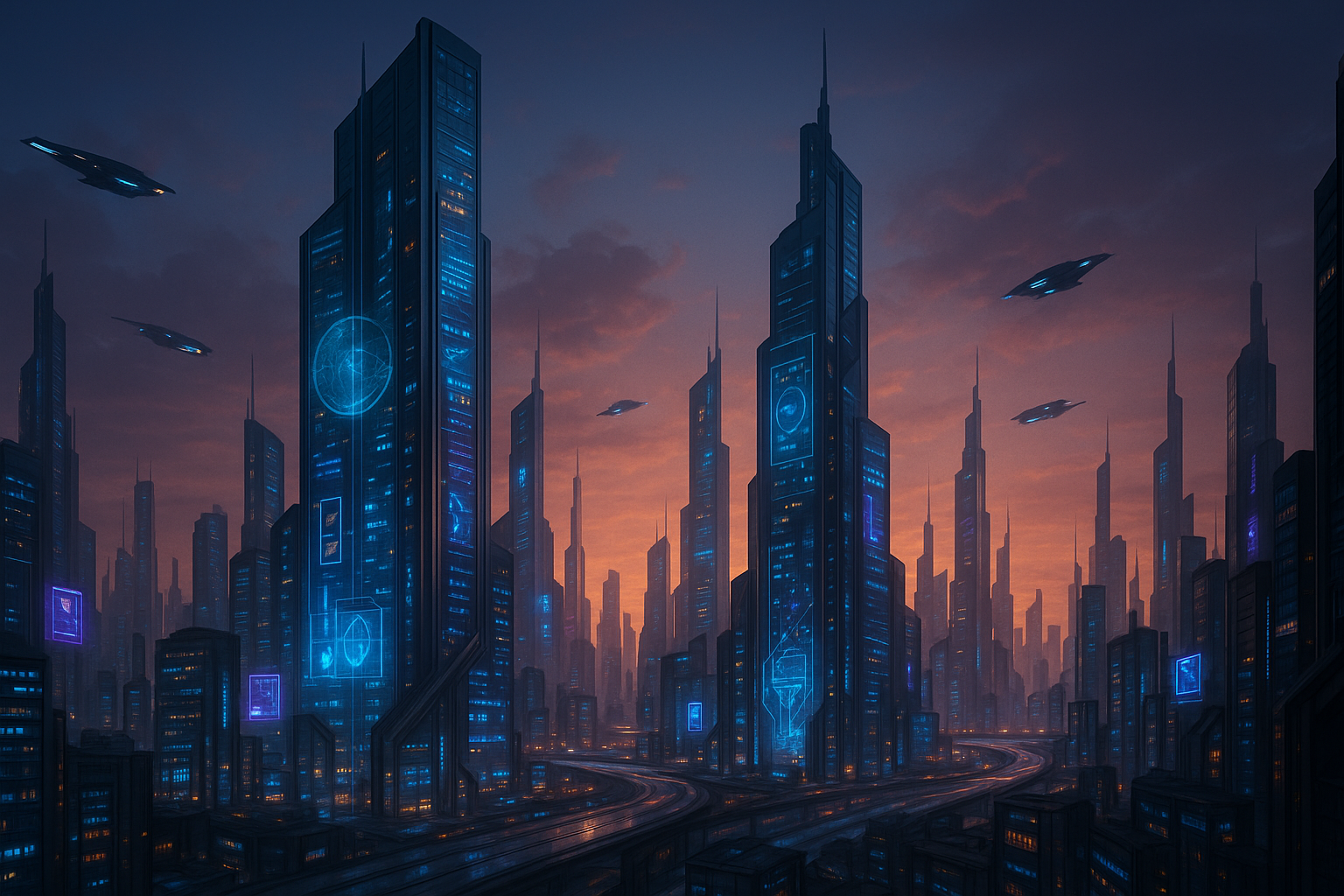
Great science fiction worlds feel lived-in, logical, and limitless in possibility.
Creating a compelling science fiction world is like building a house—you need a solid foundation before you can add the flashy details. While laser guns and faster-than-light travel might grab readers' attention, it's the underlying logic and consistency of your world that will keep them immersed in your story.
The best science fiction worlds don't just showcase cool technology; they explore how that technology shapes society, culture, and human behavior. Here are five essential tips to help you craft science fiction worlds that feel authentic, lived-in, and utterly believable.
1. Start with the Science, Then Follow the Consequences
Every great science fiction world begins with a "what if?" question. What if we could upload consciousness to computers? What if faster-than-light travel were possible? What if artificial intelligence achieved sentience? But the real worldbuilding begins when you ask the follow-up question: "Then what?"
Consider how your central scientific concept would ripple through society. If consciousness uploading exists, what happens to concepts of death, identity, and inequality? Who controls the technology? How expensive is it? What are the failure rates? These secondary and tertiary effects often prove more interesting than the original concept.
"The most believable science fiction worlds are built on the principle that every technological advancement creates new problems while solving old ones."
Exercise: The Ripple Effect
Choose one piece of technology from your story. Write down five immediate consequences, then five consequences of those consequences. This will help you understand how deeply your technology affects your world.
2. Establish Clear Rules and Limitations
Nothing breaks immersion faster than inconsistent world rules. If your faster-than-light drive can cross the galaxy in hours, why does it take days to reach the neighboring star system? If your AI can solve complex equations instantly, why can't it understand human emotions?
Limitations make your world more believable and your stories more interesting. They force characters to be creative, create natural sources of conflict, and prevent your technology from becoming a magic wand that solves every problem.
Key Areas to Define:
- Energy costs: What powers your technology? What happens when that power runs out?
- Physical limitations: What can't your technology do? Why not?
- Access restrictions: Who can use this technology? What prevents universal access?
- Failure modes: How does your technology break down? What are the consequences?
3. Consider the Human Element
Technology doesn't exist in a vacuum—it exists within human societies, and humans are messy, irrational, and wonderfully complex. The most compelling science fiction worlds show how technology interacts with human nature, often in unexpected ways.
Think about how your technological advances would affect:
- Social structures: Who gains power? Who loses it? How do class systems adapt?
- Cultural values: What becomes important? What becomes obsolete?
- Daily life: How do people work, play, and interact differently?
- Generational divides: How do different age groups adapt to change?
Remember that not everyone embraces new technology equally. There will always be early adopters and holdouts, creating natural sources of tension and conflict in your world.
4. Build History Into Your World
Great science fiction worlds feel like they have depth beyond the current story. They have history—events that shaped the current state of affairs, conflicts that left lasting scars, discoveries that changed everything.
You don't need to info-dump this history onto your readers, but you should know it. Historical events inform current politics, explain why certain technologies are banned or restricted, and provide context for character motivations and societal tensions.
Creating Meaningful History
Consider these historical turning points for your world:
- The moment your key technology was discovered or invented
- The first major conflict involving this technology
- A disaster or accident that changed how the technology is regulated
- The point when the technology became widely available (or restricted)
5. Show, Don't Explain
The mark of masterful worldbuilding is when readers understand your world through character actions and story events rather than exposition dumps. Instead of explaining how your faster-than-light communication works, show a character receiving an urgent message from across the galaxy and dealing with the three-second delay that could mean life or death.
Trust your readers to pick up on worldbuilding details through context. If your characters casually mention "the Titan Rebellion of 2387," readers will understand that there was a significant conflict on Titan without needing a history lesson.
Techniques for Organic Worldbuilding:
- Casual references: Characters mention historical events or technologies in passing
- Environmental storytelling: The setting itself reveals information about the world
- Character reactions: How characters respond to situations reveals world rules
- Conflict-driven revelation: World details emerge naturally through plot conflicts
Putting It All Together
Remember that worldbuilding is a tool to serve your story, not an end in itself. Every detail should either advance the plot, develop character, or enhance the themes you're exploring. The goal isn't to create the most complex world possible—it's to create a world that feels real enough to support the story you want to tell.
Start with your core concept, establish the rules and limitations, consider the human impact, build in some history, and then trust your readers to understand your world through the story itself. With these foundations in place, you'll have created a science fiction world that doesn't just dazzle readers with its technology, but invites them to live within its possibilities.
Your World Awaits
Great worldbuilding is like great architecture—when it's done well, people don't notice the structure; they simply feel comfortable and immersed in the space. Focus on creating a world that serves your story, and your readers will thank you by believing in every word.


